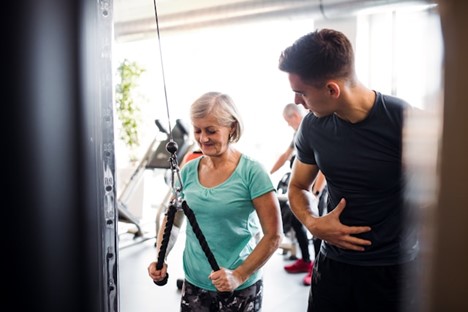As we age, maintaining balance becomes increasingly crucial for overall health and safety. Balance training is an essential component of fitness programs for senior citizens, helping to prevent falls, improve mobility, and enhance the quality of life. In the following article, John Telesca of Port Chester explores various balance training techniques tailored for seniors, providing detailed information to help them stay steady and confident on their feet.
The Importance of Balance
Balance is a complex skill that involves the coordination of muscles, vision, and the vestibular system (inner ear). For seniors, maintaining balance can be more challenging due to age-related changes such as muscle weakness, joint stiffness, and diminished sensory perception. Poor balance increases the risk of falls, which can lead to serious injuries and a loss of independence. Balance training can:
- Reduce Fall Risk: Strengthening the muscles and improving coordination can significantly reduce the likelihood of falls.
- Enhance Mobility: Better balance allows for smoother and more confident movement, enabling seniors to perform daily activities with ease.
- Improve Posture: Balance exercises often focus on core strength, which helps in maintaining proper posture and reducing back pain.
- Boost Confidence: Knowing they have good balance can make seniors more willing to engage in social and physical activities.
Effective Balance Training Techniques
Standing Exercises
- Heel-to-Toe Walk: This exercise helps improve balance by narrowing the base of support. Walk in a straight line, placing the heel of one foot directly in front of the toes of the other foot.
- Single-Leg Stands: Stand on one leg while holding onto a sturdy chair or countertop for support. Gradually try to hold the position for longer periods and eventually try without support.
- Weight Shifts: Stand with feet hip-width apart and shift weight from one foot to the other, lifting the opposite foot slightly off the ground.
Strengthening Exercises
- Calf Raises: Stand behind a chair and hold onto it for support. Raise up on your toes, then slowly lower back down. This exercise strengthens the lower legs, which are crucial for balance.
- Leg Lifts: While holding onto a chair, lift one leg to the side and then back down. Repeat with the other leg. This targets the hip muscles, improving stability.
- Squats: Perform shallow squats by sitting back as if to sit in a chair, then standing back up. This exercise strengthens the thighs and glutes.
Core Strengthening
- Seated Marches: Sit in a sturdy chair and lift one knee at a time as if marching. This exercise strengthens the core and improves balance.
- Pelvic Tilts: Lie on your back with knees bent and feet flat on the floor. Tighten your abdominal muscles to tilt your pelvis slightly upward, then release. This helps in strengthening the lower back and abdominal muscles.
- Bridge: Lie on your back with knees bent and feet flat. Lift your hips towards the ceiling, creating a straight line from shoulders to knees, then lower back down.
Flexibility and Stretching
- Ankle Circles: Sit or stand and lift one foot off the ground. Slowly rotate your ankle in a circle. This improves ankle flexibility and strength, essential for good balance.
- Hamstring Stretch: Sit on the edge of a chair and extend one leg straight out, toes pointing up. Lean forward slightly to stretch the hamstring. Flexible hamstrings support better posture and balance.
Tai Chi and Yoga
- Tai Chi: This ancient Chinese practice involves slow, deliberate movements and shifts in weight from one foot to the other, enhancing balance and coordination. Many community centers offer Tai Chi classes specifically for seniors.
- Yoga: Gentle yoga poses can improve flexibility, strength, and balance. Poses like Tree Pose and Warrior III are particularly beneficial. Look for yoga classes designed for seniors to ensure the exercises are appropriate.

Balance Aids and Tools
- Balance Boards: These devices can be used to perform various balance exercises, challenging stability and coordination.
- Foam Pads: Standing on a foam pad creates an unstable surface, forcing the body to work harder to maintain balance.
- Resistance Bands: Incorporating resistance bands into exercises can add an extra challenge and help build strength.
Tips for Safe Balance Training
- Start Slow: Begin with simple exercises and gradually increase difficulty as confidence and strength build.
- Use Support: Initially, use a chair or wall for support until you feel stable enough to perform exercises without assistance.
- Wear Proper Footwear: Shoes with good support and non-slip soles are essential for safe balance training.
- Stay Consistent: Regular practice is key to seeing improvements. Aim for balance exercises at least three times a week.
- Consult a Professional: If unsure where to start, seek advice from a physical therapist or fitness instructor specializing in senior fitness.
Conclusion
Balance training is a vital component of fitness for seniors, offering numerous benefits from improved mobility to enhanced confidence. By incorporating a variety of balance exercises, strength training, flexibility work, and practices like Tai Chi and yoga, seniors can significantly reduce the risk of falls and maintain an active, independent lifestyle. Consistency and safety are paramount, so always start slow, use support when needed, and consult professionals if necessary.
